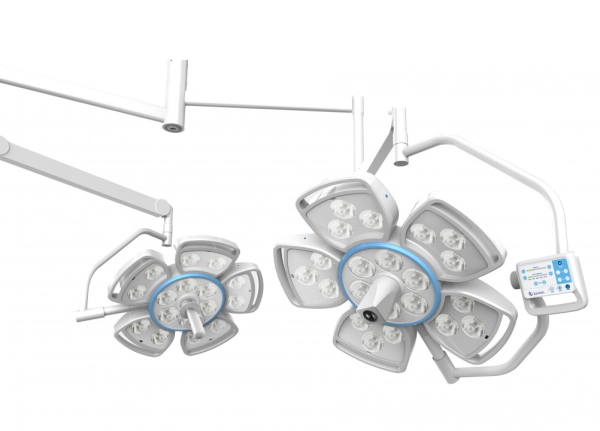One of the most relevant elements to perform efficient and quality work within an operating room is lighting, and is decisive not only for the surgeon but for the entire work team and during any type of procedure or work performed there.
Until very recently, it was considered that lighting with halogen lamps was the best that could exist due to the quality of lighting they provide, but they offer a very serious inconvenience, which is the way in which they quickly and considerably raise the temperature of the place where they are used
In addition, these types of lamps frequently have unfavorable failures and blackouts, which in some situations can be truly disastrous, especially when it happens during a difficult and / or risky procedure, and it is necessary to stop to replace the damaged unit (s).
Fortunately, today there are excellent alternatives such as LED lighting, which offers great advantages and multiple applications in all areas, and especially as far as medicine is concerned, and especially surgery.
What differences exist between halogen lamps and LEDs?
The halogen bulbs or lamps, which are the ones that have been used up to now, have a very similar operation to the traditional incandescent light bulbs, those commonly used in most homes. In the core of the lamp, encapsulated inside a quartz chamber is a quantity of halogen gas and a filament made of tungsten. This, at the moment it is powered by the flow of electric current, lights up. The greater the flow of electric current, the light increases in intensity and whiteness, and as we all know, the whiter the ambient light the human eye perceives the images with greater clarity.
The operation of LED lamps (acronym for Light Emitting Diode) is based on the diode principle, which allows the flow of electric current only in one direction, that is, it is semiconductors and that is why the use of electricity is extremely efficient, a minimum amount is enough to obtain an important beam of light.
And what advantages does it offer within the operating room?
Doctors in general look for different characteristics in the lighting of their different work spaces. Among them, the following stand out mainly:
- Whiter light. In the operating room the light should be as white as possible since the doctor needs to carefully observe the coloration of the organs and other tissues as an indicator of the patient’s health status. If the assessment is wrong because of the light tones, there may be serious complications related to failures in diagnosis or procedure.
- This is a determining factor in the selection of operating room lamps. LED bulbs, however powerful they are, do not get hot. They can be touched by hand without risk of burns. This in addition to allowing conditions of good lighting and thermal comfort inside the surgery room, offers greater security since they do not catch fire on contact with combustible materials, unlike halogen lamps.
- While the life of a halogen lamp is between 1,500 and 2,000 hours, the LEDs last between 30,000 and 50,000.
- Economy. In addition to its long duration, low power consumption and savings in the use of air conditioning are added. Although LED lamps are more expensive than halogen lamps, their durability and performance far outweigh their cost.
In any case, hospital lighting with halogen lamps still enjoys great popularity in the environment, as it is still a good option over other types of lighting that have been used in the past.
In Kalstein we offer modern operation lamps, very useful in the operating room, so we invite you to take a look HERE

